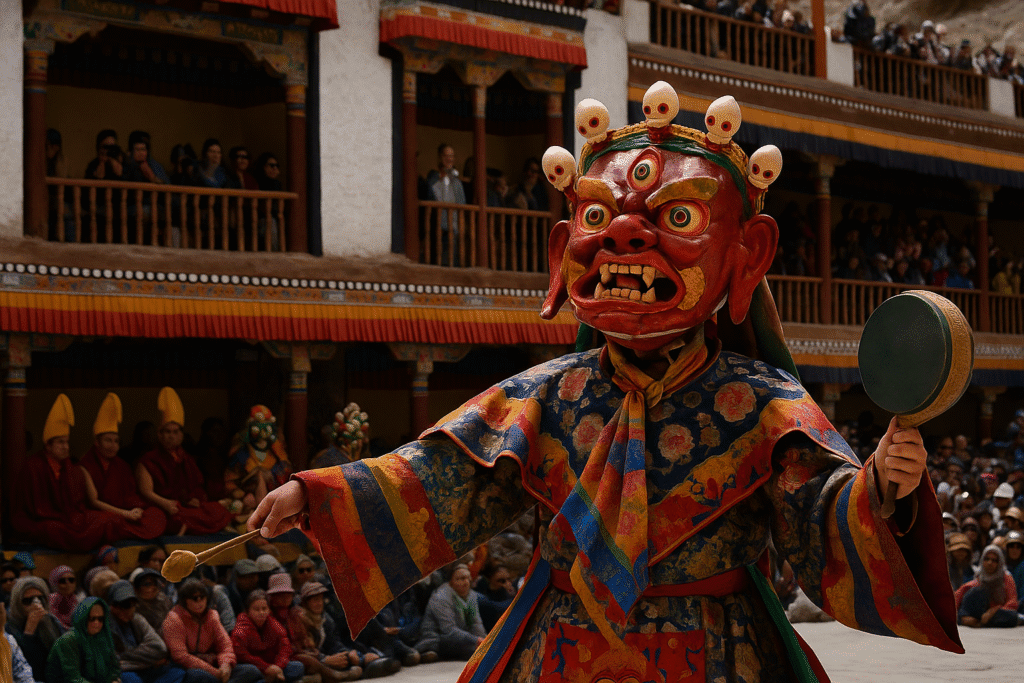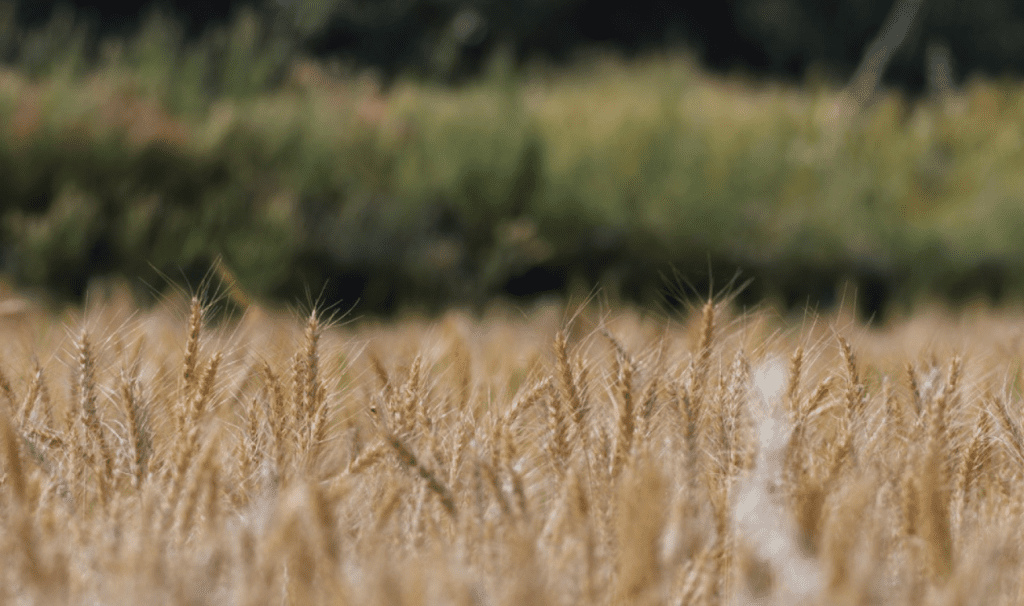Introduction: A Cultural Jewel in the Himalayas
Nestled in the rugged embrace of the Himalayas, the Hemis Festival, also known as Hemis Tsechu, is one of Ladakh’s most iconic and vibrant celebrations. Held annually at the historic Hemis Monastery, this two-day festival in June or July commemorates the birth anniversary of Guru Padmasambhava, the revered founder of Tibetan Buddhism. Known for its mesmerizing Cham dances, colorful thangka displays, and a lively showcase of Ladakhi heritage, Hemis transforms the stark desert landscape into a kaleidoscope of spirituality and festivity. Attracting locals, Buddhist pilgrims, and global tourists, the festival is a profound blend of devotion, art, and community spirit. This article delves into the history, rituals, cultural performances, and modern significance of the Hemis Festival, offering a vivid exploration of its enduring allure.
Historical Roots: A Legacy of Guru Padmasambhava
Origins in the 8th Century
The Hemis Festival traces its origins to the 8th century, celebrating Guru Padmasambhava, also known as Guru Rinpoche, who is revered as the “Second Buddha” in the Nyingma school of Tibetan Buddhism. Credited with spreading Tantric Buddhism across Tibet, Bhutan, and the Himalayas, Padmasambhava is believed to have vanquished evil spirits in Ladakh, symbolizing the triumph of good over evil. The festival, formalized in the 18th century under Gyalsras Rinpoche, has been observed uninterrupted for over 200 years, making it a living testament to Ladakh’s Buddhist heritage.
The Hemis Monastery: A Spiritual Epicenter
Founded in the 1630s by King Sengge Namgyal and re-established in 1672, Hemis Monastery, or Hemis Gompa, is Ladakh’s largest and wealthiest Buddhist monastery, belonging to the Drukpa lineage. Located 45 km southeast of Leh along the Indus River, its sprawling courtyard, adorned with ancient murals and shrines, serves as the festival’s vibrant stage. The monastery’s historical patronage by the Ladakhi royal family and its role as a cultural hub amplify the festival’s significance, drawing thousands to its sacred precincts.
Rituals and Traditions: A Spiritual Spectacle
Cham Dance: The Heart of Hemis
The festival’s centerpiece is the Cham dance, a mystical masked performance by lamas that symbolizes the victory of good over evil. Performed in the monastery’s courtyard, the slow, hypnotic movements are accompanied by the rhythmic beats of drums, cymbals, and longhorns. Lamas don vibrant silk brocade costumes and ornate masks representing deities, dakinis, and asuras, with each mask narrating a mythological tale. The dance, rooted in Tantric Vajrayana traditions, is both a meditative ritual and a visual spectacle, culminating in the symbolic destruction of a dough effigy of evil by the Black Hat dancers, signifying spiritual purification.
Thangka Unfurling: A Rare Marvel
A highlight of Hemis is the display of giant thangkas—intricate Buddhist paintings on silk. Every 12 years, during the Tibetan Year of the Monkey, the monastery unfurls its largest thangka, a two-story-high embroidered masterpiece depicting Guru Padmasambhava. The next unveiling is slated for 2025, promising to captivate visitors with its vibrant colors and intricate details. On regular years, smaller thangkas are displayed, adding to the festival’s spiritual and artistic grandeur.
Sacred Plays and Offerings
Beyond the Cham dance, monks perform sacred plays narrating Buddhist folklore, blending humor and morality to engage spectators. Devotees offer prayers, light butter lamps, and partake in Chang, a local barley-based liquor, fostering communal warmth. The head lama presides over the rituals, invoking blessings for health and prosperity, believed to enhance the spiritual well-being of all attendees. These rituals, steeped in centuries-old traditions, create an atmosphere of reverence and joy.
Cultural Performances: A Showcase of Ladakhi Heritage
Vibrant Costumes and Music
The festival is a riot of colors, with lamas and locals donning traditional attire. Monks wear long, flowing gowns and papier-mâché masks, while Ladakhi women sport embroidered kameez, salwar, and shawls made of Churida fabric, and men wear simple white kurtas or dhotis. The music, featuring trumpets, cymbals, and drums, reverberates through the Zanskar Range, infusing the barren landscape with vitality. These elements, synchronized with the Cham dance, create a sensory feast that embodies Ladakh’s cultural richness.
Handicraft Exhibitions and Local Markets
Hemis Festival doubles as a cultural bazaar, with stalls showcasing Ladakhi handicrafts like Thangka paintings, prayer wheels, turquoise jewelry, and Chho Kriki (spiced crafts). Visitors can purchase souvenirs, from handwoven shawls to earthen pots, supporting local artisans. The exhibition, set against the monastery’s dramatic backdrop, offers a glimpse into Ladakh’s artistic legacy, making it a shopper’s delight and a cultural immersion.
Culinary Delights: Savoring Ladakhi Flavors
The festival’s food stalls serve authentic Ladakhi cuisine, reflecting the region’s rugged yet resourceful culinary traditions. Visitors relish momos (steamed dumplings), thukpa (noodle soup), and skyu (pasta stew), paired with butter tea or Chang. Sweet treats like khambir bread with apricot jam add a local twist. These dishes, prepared with fresh ingredients, foster communal dining, as locals and tourists share meals under the Himalayan sky, enhancing the festival’s warm, inclusive spirit.
The Setting: Hemis Monastery’s Majestic Ambiance
A Himalayan Haven
Hemis Monastery, nestled in a cleft of the Zanskar Range, is a visual marvel. Reached via a scenic drive from Leh along the Leh-Manali Highway, the monastery is surrounded by poplar trees and rugged peaks, offering a serene yet dramatic setting. Its du khang (prayer hall), maze-like corridors, and rooftop views of the Indus Valley enhance the festival’s mystical aura. The courtyard, framed by ancient architecture, becomes a vibrant arena for dances and rituals.
Accessibility and Visitor Tips
Located 45 km from Leh, Hemis is accessible by road via taxis, buses, or private cars from Kushok Bakula Rimpochee Airport (43 km away). The nearest railway station, Jammu Tawi, is 883 km away, making road travel from Leh the most practical option. Visitors are advised to acclimatize to Ladakh’s high altitude (3,500m), dress modestly, and avoid photography inside the prayer hall. Entry tickets, approximately ₹100, include museum access, showcasing ancient relics. Booking accommodations in Leh or homestays like Gyab Thago Heritage in Stok is recommended due to high demand.
Modern Significance: A Global Cultural Beacon
Tourism and Global Appeal
The Hemis Festival has evolved into a global attraction, drawing thousands of tourists from India, Sri Lanka, Nepal, and beyond. The 2024 edition, held on June 16–17, saw vibrant celebrations, with the 2025 festival expected to be even grander due to the rare thangka unfurling. Social media and travel blogs amplify its reach, with posts showcasing the Cham dance and monastery’s splendor. The festival’s inclusivity, welcoming all faiths, fosters cultural exchange, making it a highlight of Ladakh tour packages.
Preserving Tradition Amid Modernity
Supported by the Ladakh Autonomous Hill Development Council and local communities, Hemis balances tradition with tourism. Despite challenges like harsh winters and remote access, the festival’s authenticity remains intact, with monks and artisans leading preparations. Community efforts ensure sustainable practices, such as waste management at the monastery, aligning with Ladakh’s eco-conscious ethos. The festival’s ability to engage younger generations, through dance workshops and craft exhibitions, ensures its cultural legacy endures.
Hemis in Context: A Unique Buddhist Celebration
A Distinct Himalayan Festival
Hemis shares similarities with other Himalayan festivals like Bhutan’s Paro Tshechu or Sikkim’s Losar, all rooted in Tibetan Buddhism. However, its focus on Guru Padmasambhava’s eight manifestations and the Cham dance’s meditative depth set it apart. Unlike urban festivals, Hemis’ remote setting and minimal commercialization enhance its spiritual intimacy, offering a raw, authentic experience.
A Celebration of Good Over Evil
The festival’s core theme—triumph of good over evil—resonates universally, reflected in the Cham dance’s dramatic narratives. This message, coupled with Padmasambhava’s mission to elevate human spirituality, makes Hemis a beacon of hope and renewal. Its blend of ritual, art, and community spirit distinguishes it as a cultural gem in India’s festival landscape.
Conclusion: A Timeless Himalayan Legacy
The Hemis Festival is a radiant celebration of Ladakh’s soul, where spirituality, culture, and community converge against the backdrop of the Himalayas. From the hypnotic Cham dances to the vibrant thangka displays, every element pulses with devotion and heritage. As lamas chant under the monastery’s ancient walls and locals share Chang with strangers, Hemis weaves a tapestry of unity and joy. Whether you’re a spiritual seeker, a cultural enthusiast, or a traveler craving adventure, Hemis offers an unforgettable journey into Ladakh’s heart. As the drums fade and the thangkas are rolled away, the festival leaves behind a timeless message: to honor the past, embrace the present, and dance toward a brighter future.



